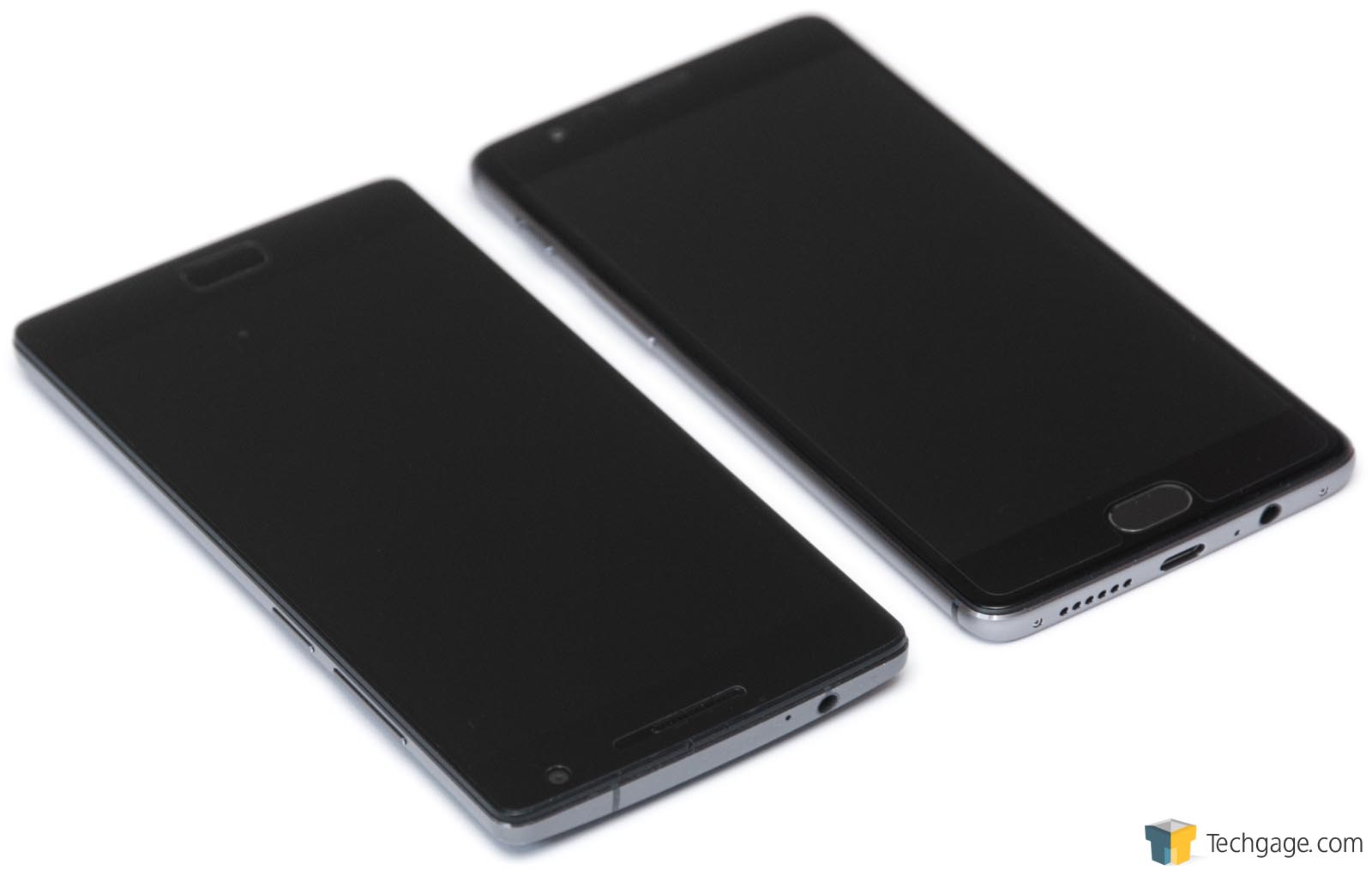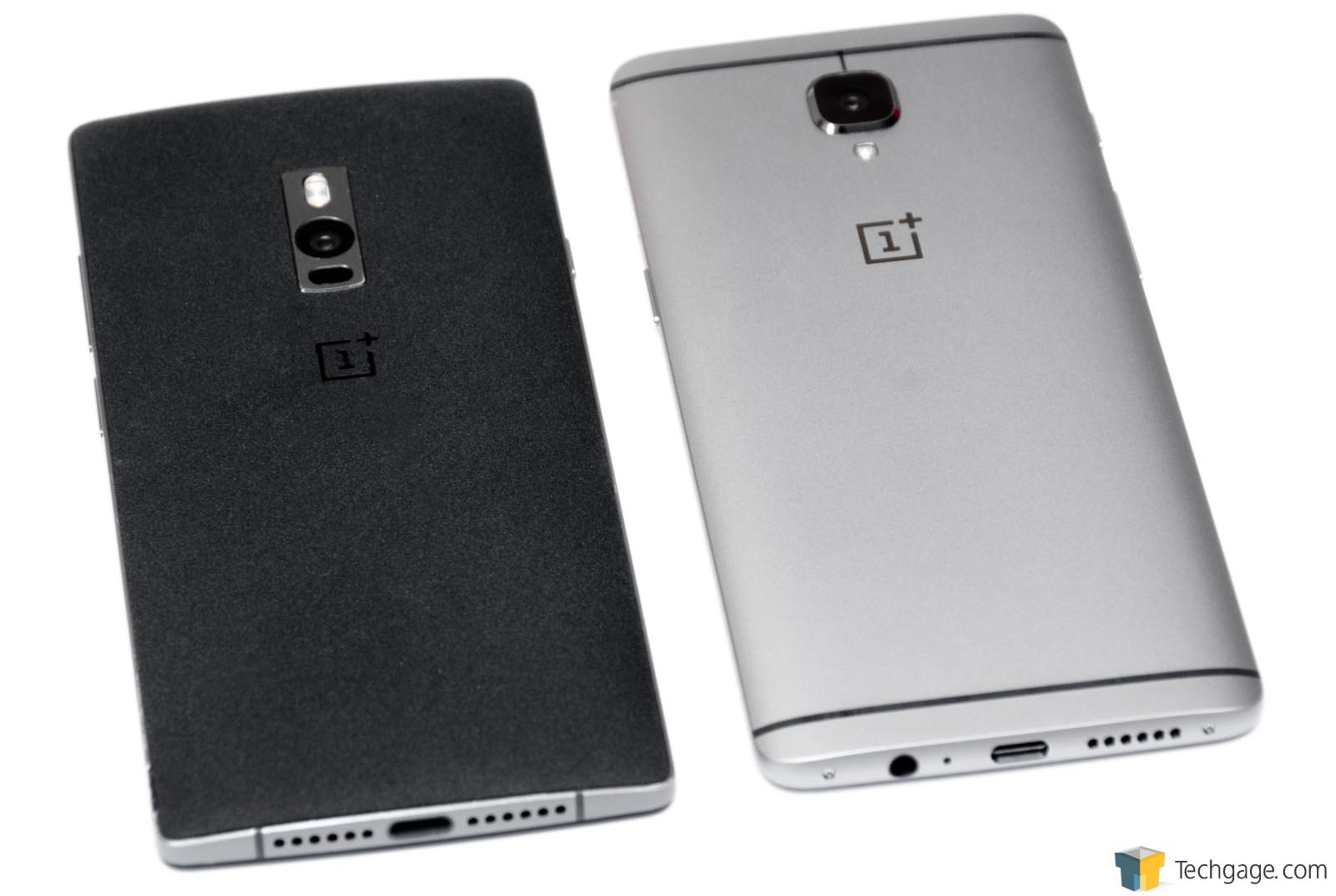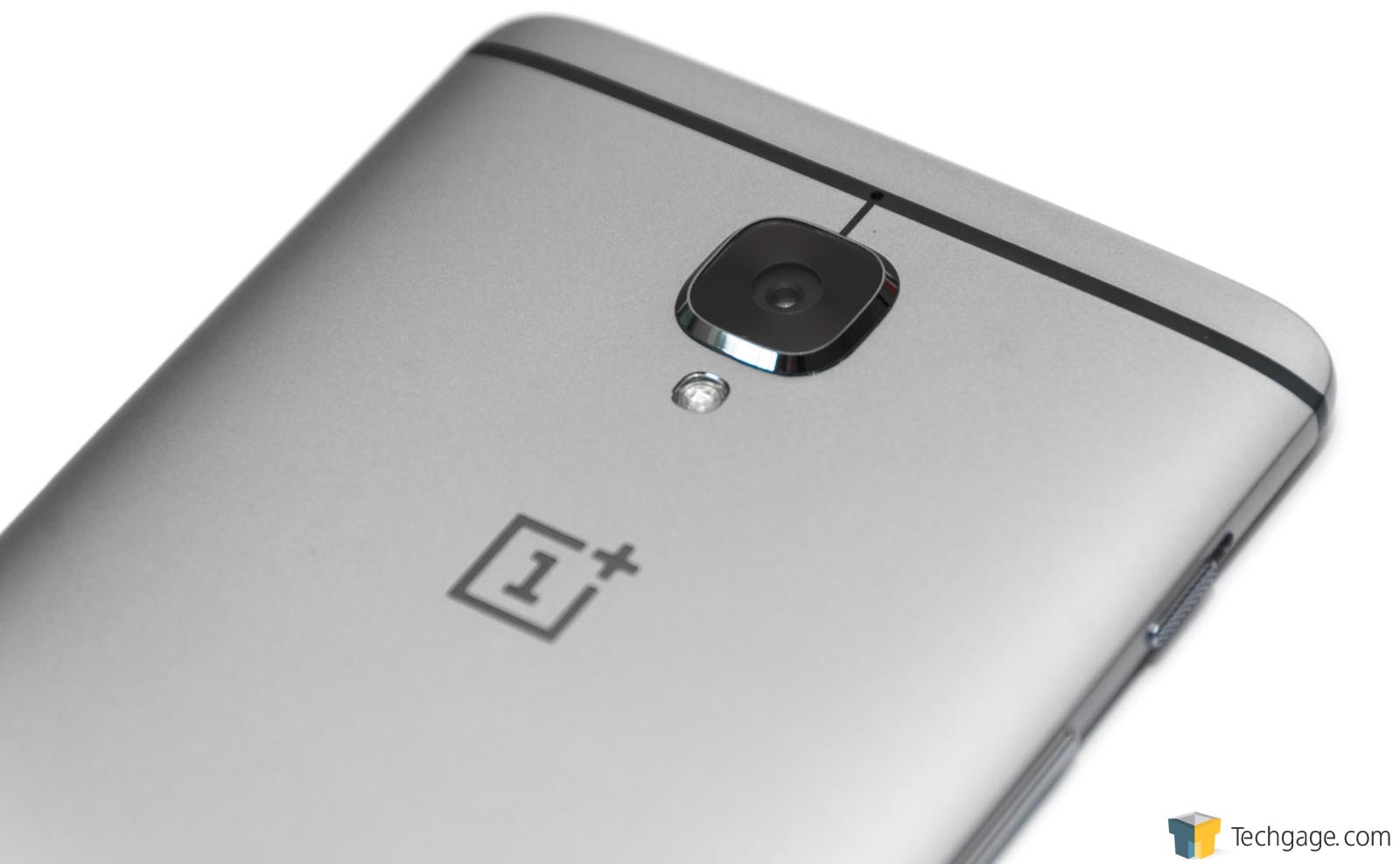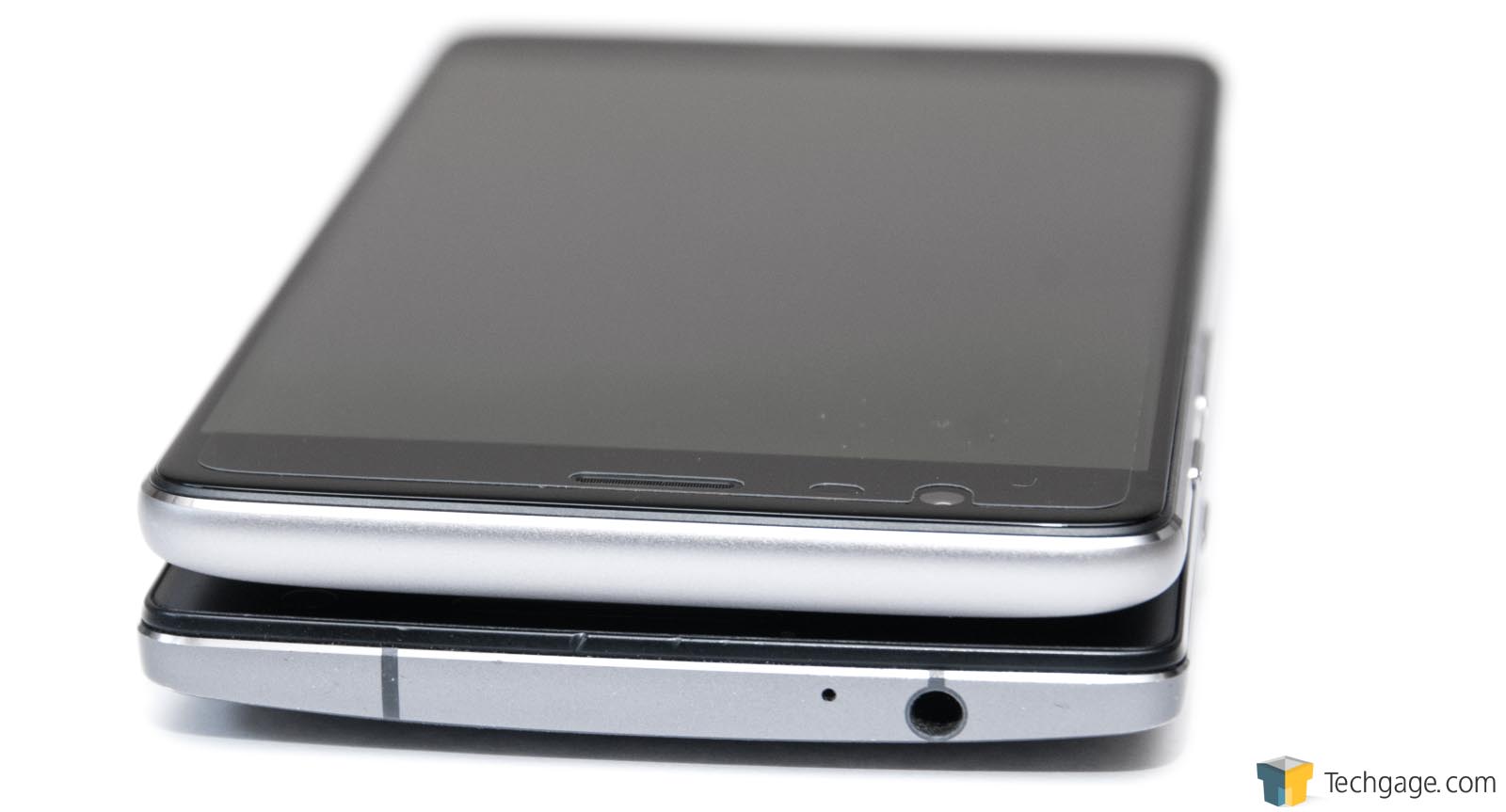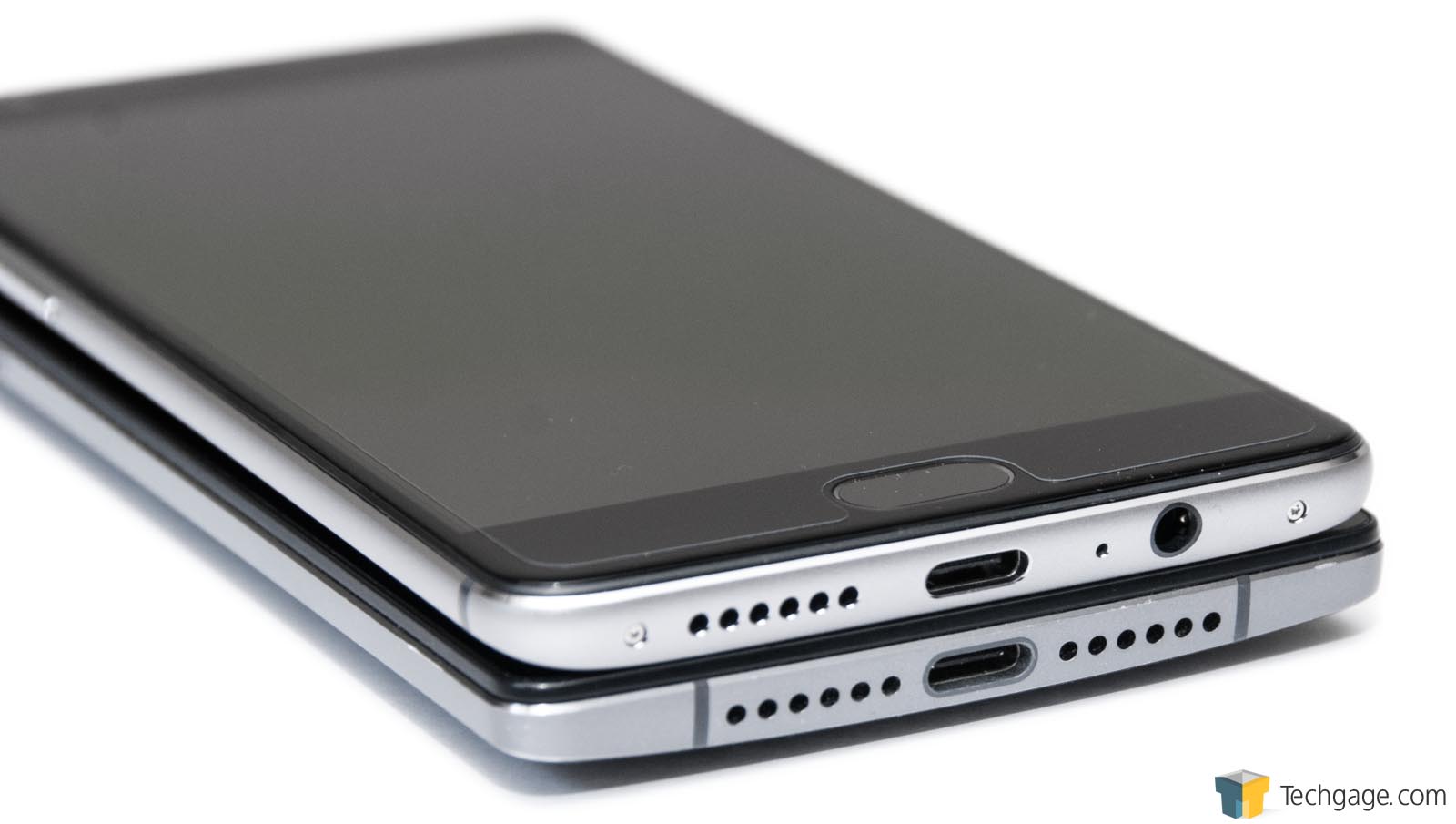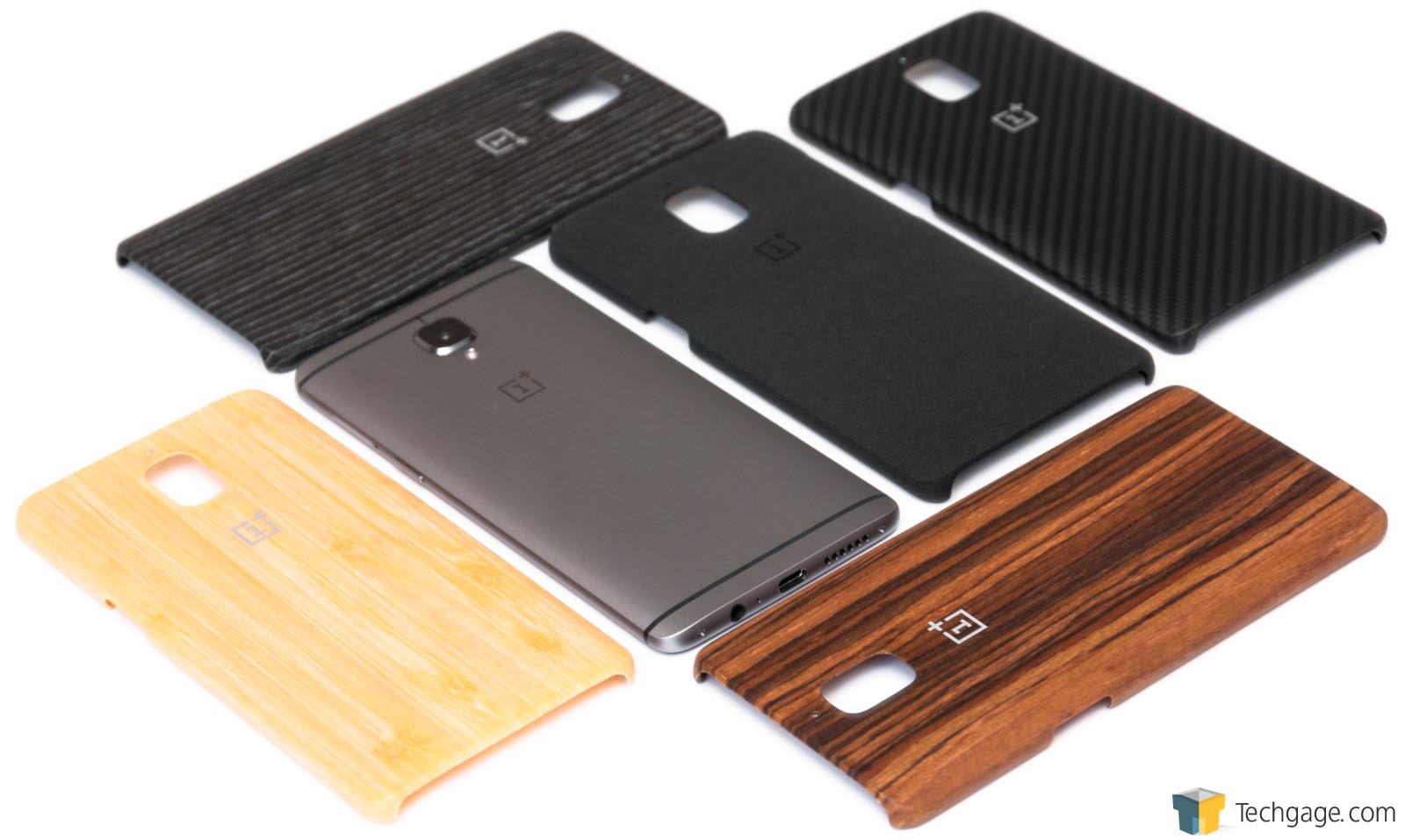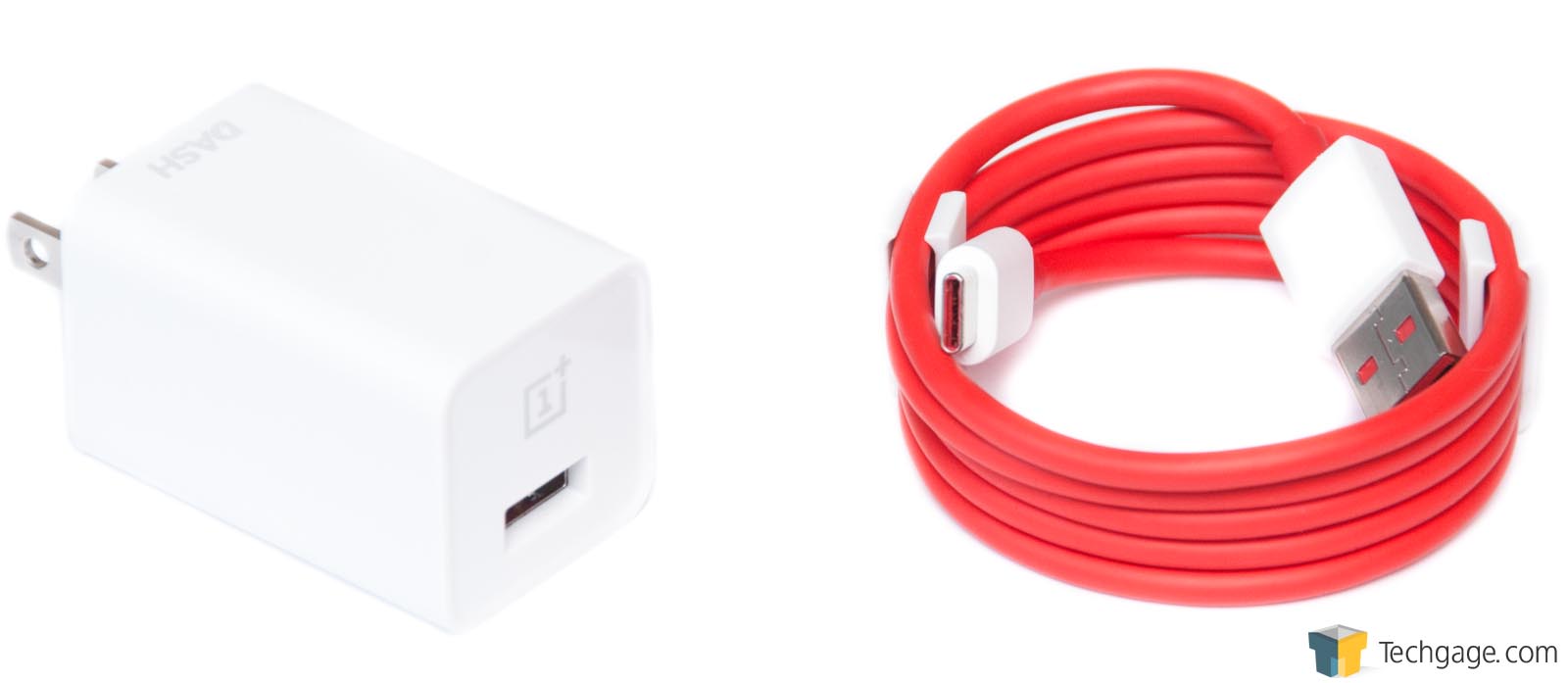- Qualcomm Launches Snapdragon 4 Gen 2 Mobile Platform
- AMD Launches Ryzen PRO 7000 Series Mobile & Desktop Platform
- Intel Launches Sleek Single-Slot Arc Pro A60 Workstation Graphics Card
- NVIDIA Announces Latest Ada Lovelace Additions: GeForce RTX 4060 Ti & RTX 4060
- Maxon Redshift With AMD Radeon GPU Rendering Support Now Available
A Real Flagship Killer: OnePlus 3 Smartphone Review

With its OnePlus 3, OnePlus has a lot to deliver on. Its first-ever flagship hit the ball out of the park, and the follow-up carried on the tradition – if we want to ignore the lack of NFC (which we don’t). Does the OnePlus 3 continue the company’s tradition of releasing great smartphones at their respective price-points? You bet it does.
Page 1 – Introduction, A Tour Of The Hardware
It feels like only yesterday we took the OnePlus 2 for a test drive, and here we are with the OnePlus 3, primed for the same in-depth evaluation.
Like the OnePlus 2 before it, the OnePlus 3 becomes OnePlus’ latest flagship. At its website, OnePlus (redundant, I know) lists both the OP2 and OP3 as current models, although I couldn’t imagine that the OP2 will remain there for long. The company also still sells the mainstream-focused OnePlus X, although it’s recently been moved inside a nestled menu, suggesting that it might not be there for much longer, either.
But enough about OP’s older phones: let’s tackle its latest hotness, the OnePlus 3:
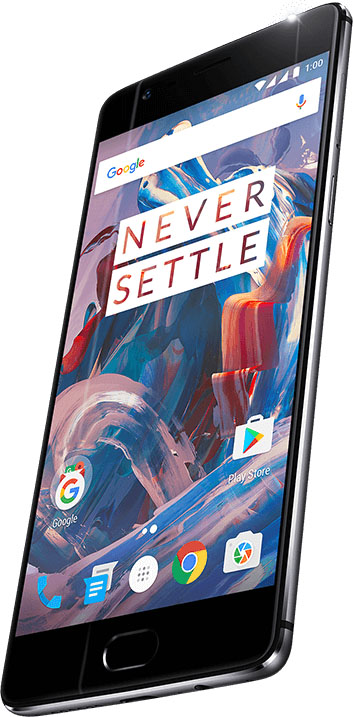
OnePlus isn’t tossing around the “Flagship Killer” message this time around, which could be because the one and only model costs $70 more than the previous one, to sit at $399. Even so, the title is apt: for its price, the OnePlus 3 packs in many great features and a lot of performance. Or, in other words, the OnePlus 3 has the goods to satiate your desire for a top-tier phone.
At the forefront of this performance is the Qualcomm Snapdragon 820 processor, a quad-core model that features two cores clocked at 2.2GHz, and two clocked at 1.6GHz. The GPU has also been upgraded over the OnePlus 3, with this phone featuring the Adreno 530.
| OnePlus 3 | |
| SoC | Qualcomm Snapdragon 820 4-core CPU (2×2.2GHz + 2×1.6GHz) Adreno 530 GPU |
| Display | 5.5-inch 1080p (401ppi) AMOLED |
| Storage | 64GB |
| Memory | 6GB LPDDR4 |
| Wireless | Supports GSM, LTE, HSPA & CDMA EVDO Supports Dual-band 802.11ac, Bluetooth 4.2, GPS, NFC |
| Camera | Front: Sony IMX179 8 megapixel (1080p/30) Rear: Sony IMX298 16 megapixel (4K/30) |
| Battery | 3000mAh Li-Polymer (Non-removable) |
| Weight | 158g |
| Dimensions | 74.7 x 152.7 x 7.35mm |
| Et cetera | Android 6.0.1 Support for 2 SIMs Uses USB-C (2.0) connector (standard USB plugs into PC) |
A notable feature the OnePlus 3 has that the OP2 doesn’t, is NFC. While it’s still baffling to me that the OP2 didn’t have NFC (especially when some lower-end phones do), there’s at least the upside that the company immediately corrected the omission with this follow-up.
But, if you’re planning to upgrade to the OP3 from OP2 and migrate settings, it won’t be through the ease of NFC.
It’s also notable that this phone becomes the first (that I know of) on the market with 6GB of memory, something that I imagine could only be useful (at this point in time) for virtual reality, if you’re wishing to view very high-resolution 360° images. For regular phone use, it seems very unlikely that many people would even exceed 2 or 3GB. But hey – it looks good on paper.
Like the OP2, the OP3 is able to record at 4K/30, although its sensor has been replaced with a higher-quality one. The screen is also similar, a 5.5-inch at 1080p, giving us a ppi of 401.
The OnePlus 3 is 17 grams lighter than its predecessor, as well as 2.5mm thinner – a major difference given we’re talking about sub-10mm to begin with. At the expense of that, the battery has dropped from 3,300mAh to 3,000mAh, but to help negate that downside is the Dash charger, which helps the OP3 charge much faster than the OP2 (as we’ll see later).
With both phones in-hand, the OP3 is clearly thinner. Despite that, it doesn’t feel brittle or weak. With one of the company’s official cases, both widths are almost perfectly matched (at least, based on sight and feel). Because of the grittier back of the OP2, I feel like it’d be the “safer” phone to hold, but the OP3 feels better (even with the case).
One thing that really sets the OP3 apart from the OP2 is that the camera protrudes out of the back; it’s not (kind of) flush like it is on the OP2. To some, this might not be ideal, but it’s done in the attempt to provide improved image quality. It’s one sacrifice I’d personally make, because poor image quality from a camera drives me bonkers.
Another change – and this is noticeable – is that OnePlus moved the headphone jack from the top to the bottom. This is going to be a love-it-or-hate-it change, but with such a design, the power/data cable and your headphones would plug into the same side; it’s simply more elegant. I’d still prefer it at the top, but this is one of those decisions that simply can’t please everyone.
OnePlus even moved the position of the volume rocker; that’s now located on the left side. This is another change I don’t quite get, but lefties might appreciate it. Also on the left side of the OnePlus 3 is a notification button; while on the right side, there’s the power, and SIM holder.
The SIM holder on this phone is well-secured, requiring a pin to eject (OnePlus provides a tool in the box). Once your SIM card(s) are in place, you can slide the tray back in and they’ll remain safe until you decide to pop them out again.
OnePlus was super generous when it came to our sample, as it shot along all five of its cases for testing. All of them have the same smooth feel, but each one has a very different aesthetic. Most people I’ve talked to have said that the carbon fiber one is the most attractive, and I might have to agree as that’s the one I’ve been using. The gray wood-grain case is also pretty eye-catching, though.
Another accessory OnePlus sent along was its Dash car charger, which retails for $30. Like the Dash wall charger included with the phone, this car charger is designed to replenish the OP3’s battery-life quicker than any other out there.
On the topic of charging, OnePlus claims that its Dash charger can push a phone from 0% to 60% in 30 minutes flat, and I’ll spoil something right now: it’s true. That’s one of the reasons a ~10% loss on the battery capacity isn’t going to matter that much, because even a short fifteen minute charge will add substantial life to the phone.
Charging the OnePlus 3 is going to spoil you if you don’t have another that charges just as fast. For reference: the OnePlus 2 charged from 0% to 35% in 30 minutes, and 0% to 18% in 15 minutes.
Support our efforts! With ad revenue at an all-time low for written websites, we're relying more than ever on reader support to help us continue putting so much effort into this type of content. You can support us by becoming a Patron, or by using our Amazon shopping affiliate links listed through our articles. Thanks for your support!




